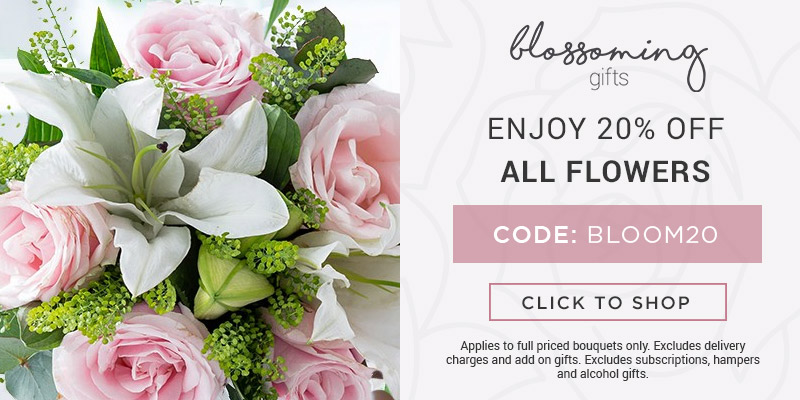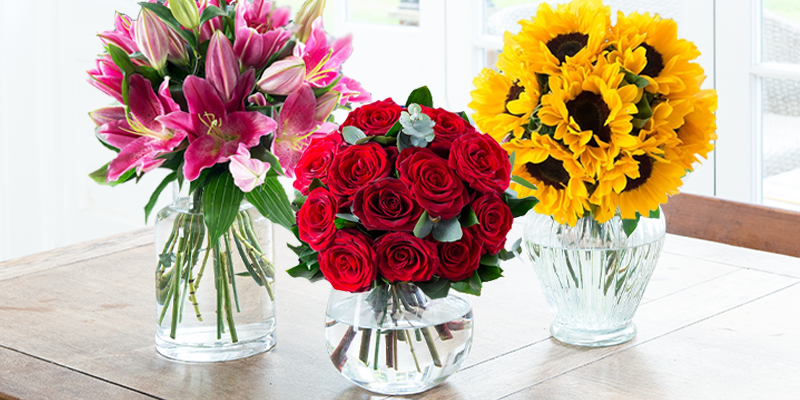Do you ever find yourself drawn to certain blooms and you don’t know why? There might be more behind it than you think. Here, we explore the meaning behind flowers.
Humans have cultivated decorative flowers almost as long as we have cultivated crops. With such a long, entwined history cultures across the world have connected deeply rooted meaning in the flowers we choose to give one another. Known as floriography, the language of flowers reveals flower meanings and flower symbolism hidden behind each bloom. A picture paints a thousand words, but a well-chosen flower can leave you speechless.
Rose Flower Meanings
Roses are not only one of the most popular flowers, but one of the most widely found. Edible from root to petal, roses are gifted in many forms. Roses have long been very important to the cultures they are found in, and so unsurprisingly have racked up a deeper well of symbolism than many other flowers. There are species of rose indigenous from Asia to Europe, North America and Northern Africa, making it unsurprising that it has found importance to so many cultures. With such diversity in the rose family tree comes a rainbow of colours, each with its own subtle meaning.
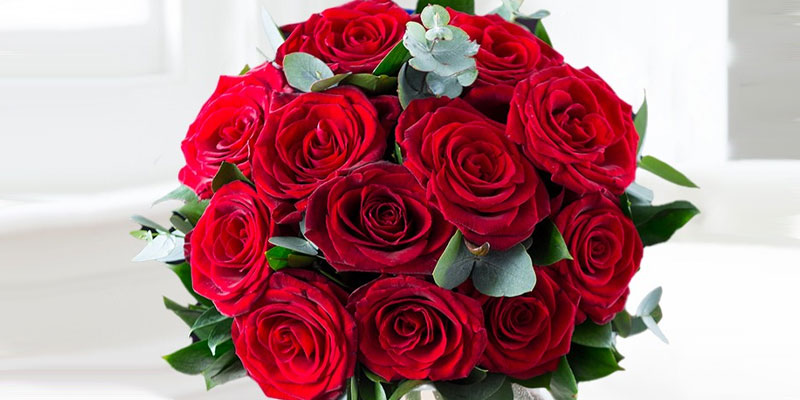
What do red roses symbolise?
Perhaps the flower with the most widely known meaning: red roses are a universal symbol of romantic love. This connection likely comes from ancient Greece, where the rose was closely connected with Aphrodite; the goddess of sexual love, fertility and passion. One ancient Greek writer, Pausanias, even suggested that the red rose got its colour from the blood of Aphrodite, after she pricked herself on the flower’s thorns.
The thorns of the flower add layered meaning; gifting a long stemmed, thorned rose can show a barbed love, one painful for the giver and receiver. It can also demonstrate a careless love, without the proper time taken to ensure the safety and security of those involved. The thorns have also given the rose many of its meanings; from Aphrodite above to Corinthians, where Paul is given a thorn in his side to stop him becoming conceited. The thorns in the rose also show balance, indulgence in life’s pleasures without a blindness to its risks. Many florists strip thorns from the lower half to ensure safety, while retaining this beautiful nuance to the flower.
What do white roses symbolise?
In the Victorian era, a white rose was given to a partner as a gesture of apology, or as a bouquet to someone close in sign of your condolences.
The white rose is also a joyful flower, it is said the birth of Aphrodite came with a shower of white roses, and so they are a symbol of innocence and young love. The connection with innocence and the white rose is also shown in the Christian church, with white roses closely associated with the Virgin Mary.
It is precisely this connection with purity and the Virgin Mary that led Edmund of Langley, 1st Duke of York to take the white rose as his emblem… although many have suggested that this was simply to be contrary his older brother, Duke of Lancaster John of Gaunt, whose symbol was the red rose!
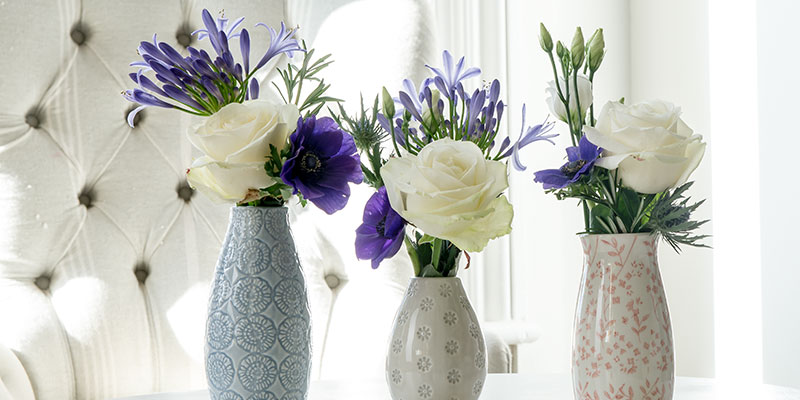
What do yellow roses symbolise?
The meaning of yellow roses reflects their appearance- joy and brightness. They are also used to show gratitude, friendship, and by extension gratitude for that friendship. Be careful when you are gifting a yellow rose, however, in the Japanese language of flowers, hanakotoba, the yellow rose can represent jealousy.
What do pink roses symbolise?
Pink roses are gifted to show gratitude and admiration and displayed to communicate trust and confidence in those around you. Pink roses have taken on much of the modern meanings of pink generally; connected with femininity, warmth and grace. They are often gifted to show gratitude for women in your life, making them a popular choice for Mother’s Day bouquets.
Lily Flower Meanings
Lilies are also represented in hanakotoba, where you must be careful on your choice of bloom; an orange lily can stand for both hatred and revenge, or passion and excitement, whereas a white lily symbolises purity and chastity. A pink lily is always a safe choice, as it means love, admiration, and femininity.
The British interpretation holds both these extremes of emotion, with lilies being a flower of death, but representing the restored innocence of the soul after death. The lily echoes this, as it is a flower that blooms quite dramatically after being cut.
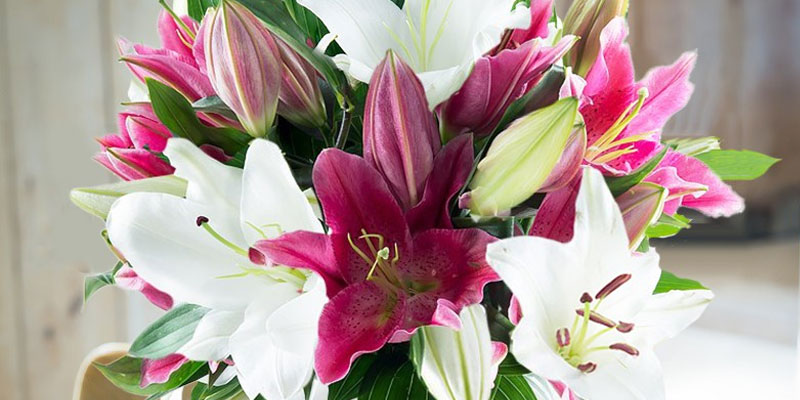
Orchid Flower Meanings
Due to how difficult they were to propagate and grow in Victorian homes, orchids became a symbol of luxury and opulence. Many wealthy Victorians hired collectors and explorers for the sole purpose of finding and delivering rare orchids to display in their homes. The term “Orchideliruim” was coined for this period in history, to reflect the delirious obsession with orchids among this wealthy circle. The desire for rare orchids was so high in this period, and the ability to properly care for them so low, that many species of orchid are still endangered.
Surprisingly, the name “Orchid” derives from the Greek word “orkhis,” meaning male gonads. They were named by the ancient Greek botanist Theophrastus who believed the roots of the plants looked like them. Not quite where your mind might go, but due to this association, orchids have often been used as a symbol of virility, fertility and sexuality. Following this train of thought, they have historically also been used as a symbol of strength and power.
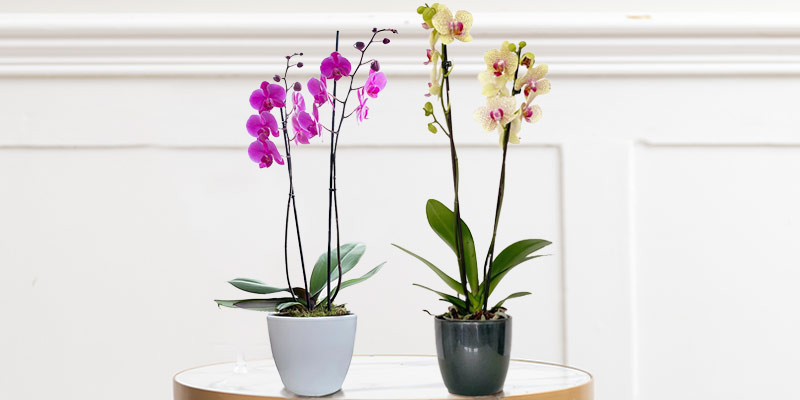
Carnation Flower Meanings
Perhaps due to their excellent propensity toward being a buttonhole flower, carnations were richly used in the heydays of floriography to communicate the status of your courtship. Red carnations were primarily used to signal your admiration, with the colour deepening to reflect the depth of your love. Light pink shows gratitude, with deep red showing intense romantic love. At the opposite end of this scale, white carnations symbolise purity. The meaning of a red carnation can change depending on the time of year, as red carnations are also worn on May Day to show solidarity for the workers movement.
Carnations can also denote love toward someone lost. In Mexico, they have been used to adorn the bodies of those passed, and purple carnations are a traditional funeral flower in France.
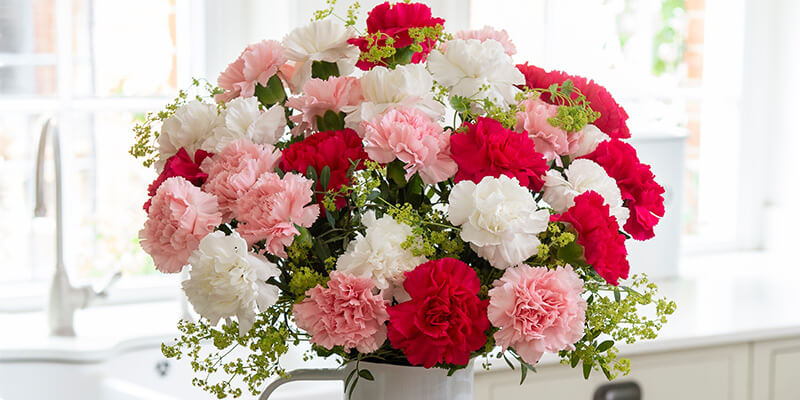
Peony Flower Meanings
Peonies have incredible cultural significance to their home country, China, where they are a flower of riches and honour. Long used in medicine and cookery, the Chinese philosopher Confucius was said to “eat nothing without its sauce.” A gift with an odd number of peonies is said to be bad luck, so be careful when preparing a bouquet!
In Japan, a peony means bravery and white peony means quite the opposite: bashfulness. Peonies can take a long time to bloom when moved, so Victorians believed that digging up a peony would anger the fairies. Once established, a peony can bloom continuously for years which is a sign of prosperity.
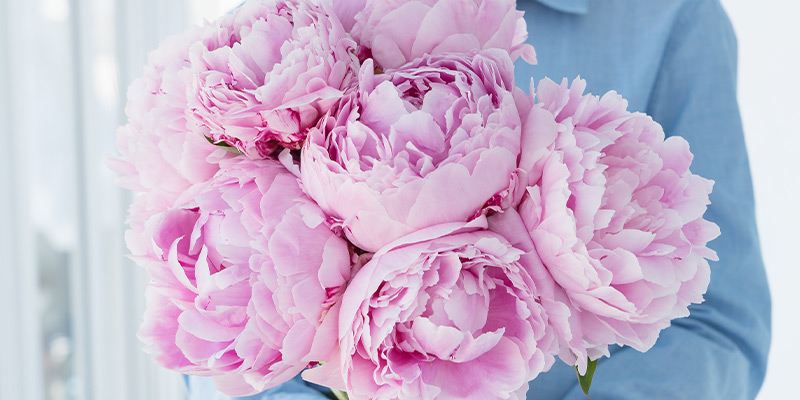
Sunflower Meanings & Symbolism
Their grand stature and proud yellow heads lend much to the meaning behind sunflowers. Quite literally named after the sun, sunflowers evoke positivity and warmth and are a symbol of respect and radiance in hanakotoba. It has been said that the sunflower turning to follow the sun symbolises great faith. In returning to the sun, the sunflower symbolises loyalty.
In China, sunflowers symbolise longevity- perhaps connected to the long life of the sun. As such, they are often gifted at the opening of a new business or chapter in one’s life as a wish of longevity and prosperity in your endeavour. Sunflowers themselves also have a fairly long life, and after being cut can last several weeks.
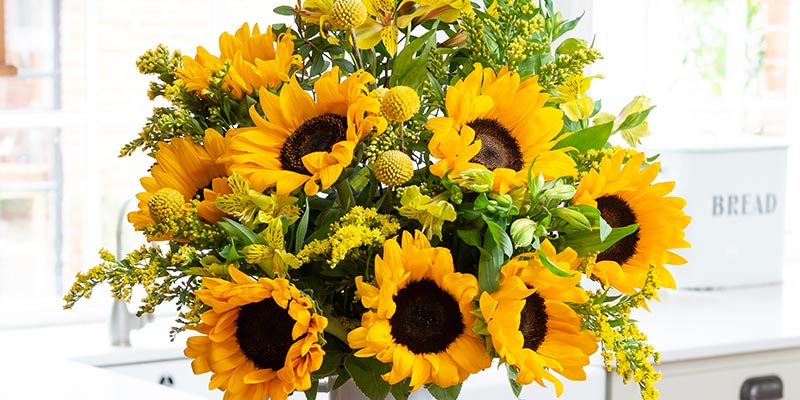
Lisianthus Flower Meanings
A prairie flower that blooms in desert riverbeds and wide-open spaces, the Lisianthus is a flower of gratitude that shows the deep nourishment of good friends. Lisianthus symbolises thoughtfulness and serenity as we reflect on these bonds. Also known as Eustoma, which is a compound of the Greek for “pleasing” and “mouth,” these flowers are the perfect gift for those whose conversations bring you true pleasure.
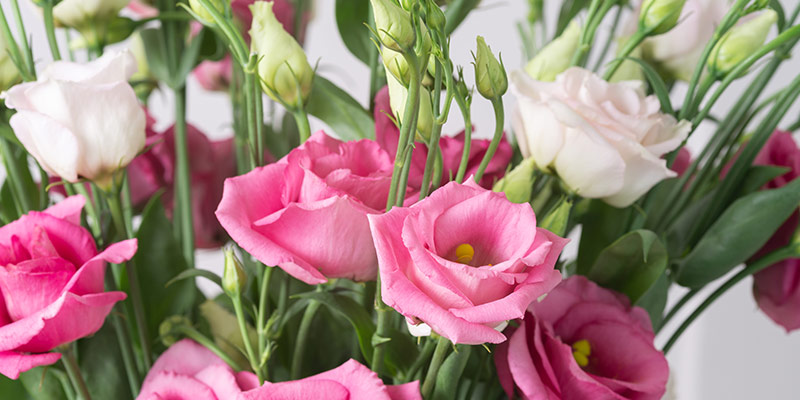
Alstroemeria Flower Meanings
A sister of the lily (with perhaps a little more showiness,) the alstroemeria is a flower of friendship. We are seeing an increase of alstroemeria for brides, as bridal bouquets are being used to symbolise finding both a soulmate and a best friend.
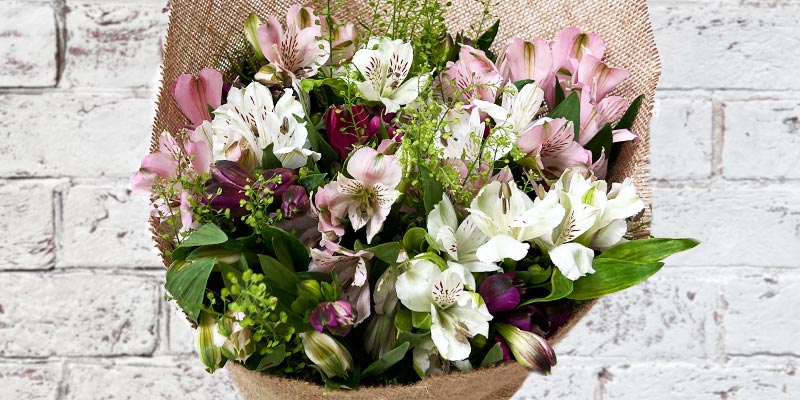
Chrysanthemum Flower Meanings
In Japan, the yellow Chrysanthemum represents the imperial family, and a stylised Chrysanthemum is still the imperial seal today. Japanese chrysanthemums bloom throughout the autumn and thrive in the conditions found near shrines. As such, this bloom has become a symbol of longevity, nobility, the rejuvenation of family and, more broadly, the autumn period, compassion and a rich harvest.
White chrysanthemums have been known as ‘the flower of death,’ which is perhaps a result of their being lost in translation as they were brought over to europe. Their prominence in graveside locations, such as shrines, led Europeans to associate them with death as they were brought over in the 17th century.
In modern day, the presence of the word ‘mum’ at the end of their name has kindled a new association; motherhood. In Britain and Australia, they are exceptionally popular blooms in the run up to Mothers Day.
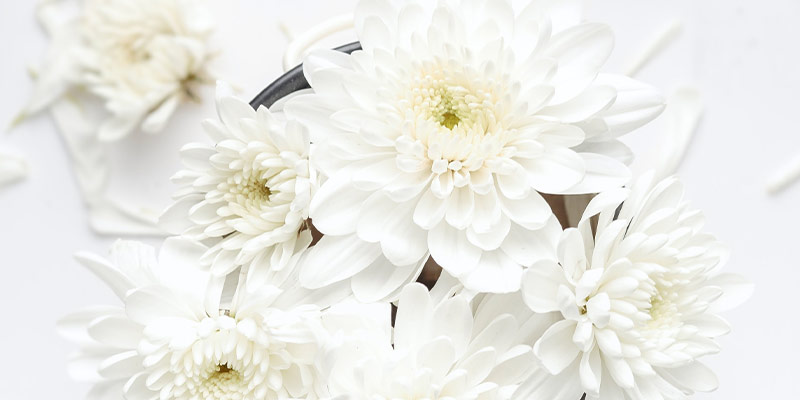
Germini Flower Meaning
Little sister to the popular Gerbera, Germini are a bright and peppy flower. Defined quite literally by their smaller stature, this is a flower to show joy in the little pleasures of life.
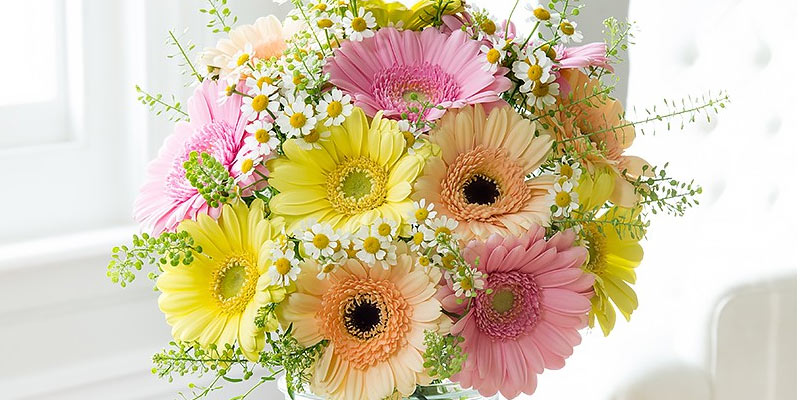
Tulip Flower Meanings
The deep colour of the tulip reflects the intensity of its meaning; a perfect and deep love as well as wealth, status and indulgence. A prominent flower in floriography, variations in the tulip’s colour also create variations in its meaning, which tracks with that of the rose. Red for love, yellow for jealousy and white for purity.
The deepest coloured flower found in Europe at the time, their introduction led to the first economic speculative bubble- and subsequent crash- a period in history that is now known as “tulip mania.”
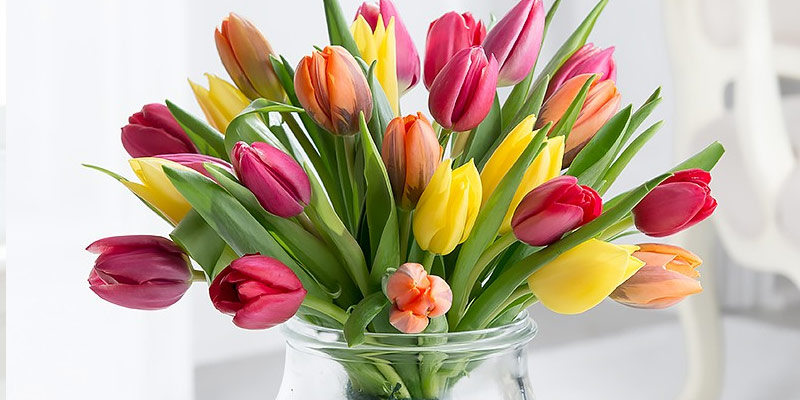
Hyacinth Flower Meanings
These stunning star shaped flowers are a favourite for spring gardens. Another flower named from Greek legend; Apollo and Zephyr’s competition for a young prince Hyakinthos’ affections grew so fierce that Hyakinthos was accidentally killed in their courtship. As such many colours of hyacinth have meanings connected to this origin story.
Commonly found in blues, purples and pinks each shade has its own unique meaning as well as unique scent. True blue hyacinths are a symbol of sincerity, while purple communicates regret, or prayers offered for a loved one. Red Hyacinths are one of the rare red flowers to not represent love and passion, and instead are a symbol of playfulness. Perhaps unsurprising given their joyful towers of bright flowers.
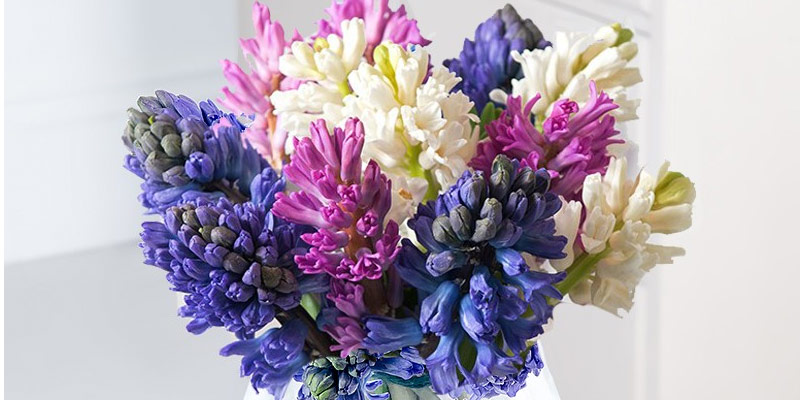
Ranunculus Flower Meaning
A cultivated form of the humble buttercup, the name of this flower literally translates to ‘little frog’ from the latin. In the Victorian times, a gift of Ranunculus was used to show that you were charmed by someone, and harbouring affection for them. In the American pacific northwest they are also known as coyotes eyes, in reference to a Sahaptin legend where a bored coyote flings his eyes into the air and ends up using Ranunculus as replacement eyes.
Good in an emergency, and a great gift for a little frog in your life: Ranunculus are certainly one of the more eccentric and lovable flowers!
